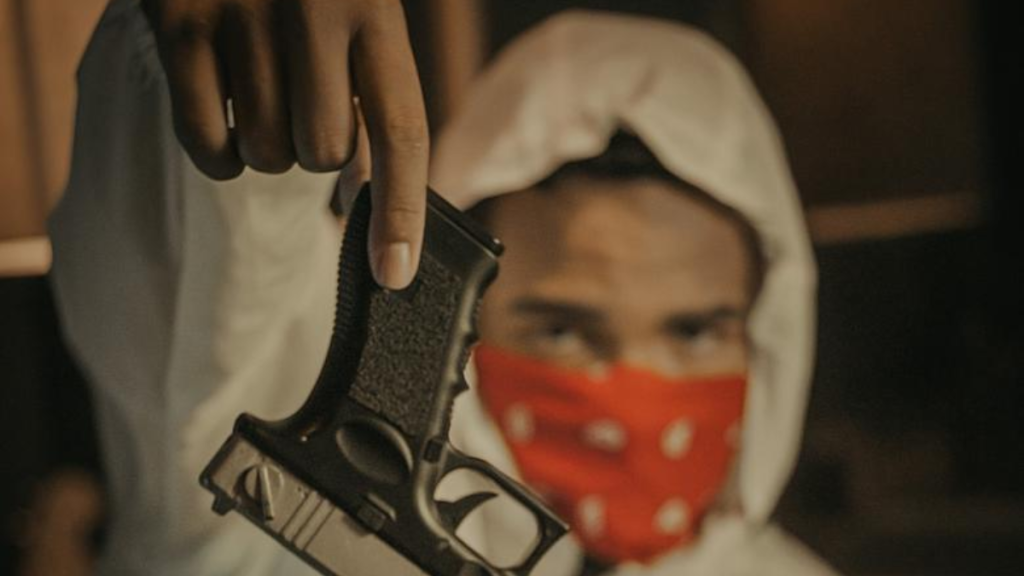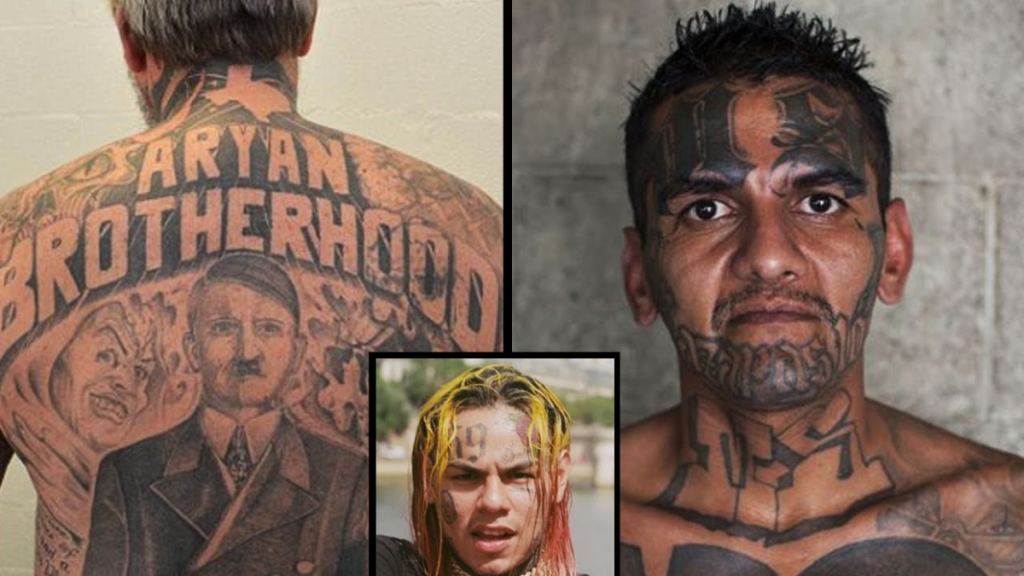
Pennsylvania is a state with a rich history, culture, and economy, but it also faces some serious challenges from crime and violence. Among the most notorious sources of criminal activity are the gangs that operate in various cities and regions of the state. These gangs are involved in drug trafficking, firearms violations, murder, robbery, and other offenses that threaten the safety and well-being of the residents and communities. In this article, we will look at seven of the most dangerous gangs that are taking over Pennsylvania, based on their size, scope, and impact.
1. The Hazelwood Mob
The Hazelwood Mob, also known as the Down Low Gang, is a violent neighborhood gang based out of the Hazelwood neighborhood of Pittsburgh. The gang has been active since the early 2000s and has been involved in numerous shootings, homicides, and drug distribution in and around the area.
The gang is composed of leaders, members, drug suppliers, and associates, who often use social media to communicate and flaunt their illegal activities. In September 2021, a federal grand jury indicted 24 individuals associated with the Hazelwood Mob on charges of conspiracy to distribute drugs and firearms violations. The indictment was the result of a four-month wiretap investigation that aimed to dismantle the gang and restore peace and order in the neighborhood.
2. The Bloods
The Bloods are one of the most notorious and widespread street gangs in the United States, with a presence in almost every state, including Pennsylvania. The Bloods originated in Los Angeles in the 1970s as a rival to the Crips, another prominent street gang. The Bloods are known for their use of the color red, the five-pointed star, and the word “blood” as their symbols and identifiers.
The Bloods are divided into various sets or subgroups, each with their own leadership, territory, and allies. Some of the most active Bloods sets in Pennsylvania are the Fruit Town Brims, the Sex Money Murder, the Nine Trey Gangsters, and the G-Shine.
The Bloods are involved in various criminal activities, such as drug trafficking, robbery, extortion, murder, and racketeering. The Bloods often clash with rival gangs, such as the Crips, the Latin Kings, and the Aryan Brotherhood, as well as law enforcement agencies.
3. The Pagans Motorcycle Club
The Pagans Motorcycle Club, also known as the Pagans MC, is an outlaw motorcycle club that operates mainly in the eastern and midwestern regions of the United States, including Pennsylvania. The Pagans MC was founded in Maryland in 1959 and has since expanded to several states, with an estimated membership of 200 to 250.
The Pagans MC is known for their use of the Norse god Loki, the number 16, and the colors blue and black as their symbols and identifiers. The Pagans MC is involved in various criminal activities, such as drug trafficking, firearms violations, assault, murder, and extortion. The Pagans MC often clash with rival motorcycle clubs, such as the Hells Angels, the Outlaws, and the Bandidos, as well as law enforcement agencies.
4. The Hilltop Gang
The Hilltop Gang, also known as the Hilltop Crew, is a violent drug trafficking organization that operates in the West Philadelphia area. The gang was formed in the late 1990s and has since grown to include dozens of members and associates, who control the drug trade in the vicinity of 52nd Street and Lansdowne Avenue. The gang is known for their use of the initials “HT” and the color green as their symbols and identifiers.
The gang is involved in various criminal activities, such as drug trafficking, firearms violations, robbery, murder, and witness intimidation. The gang often targets rival drug dealers, customers, and informants, as well as innocent bystanders.
In February 2020, a federal grand jury indicted 15 individuals associated with the Hilltop Gang on charges of conspiracy to distribute drugs and firearms violations. The indictment was the result of a multi-agency investigation that aimed to disrupt the gang and reduce the violence in the area.

5. The Rollin 60s Crips
The Rollin 60s Crips, also known as the Rollin 60s Neighborhood Crips, are a large and influential street gang that operates mainly in the western and southern regions of the United States, including Pennsylvania. The Rollin 60s Crips originated in Los Angeles in the 1970s as a faction of the Crips, another prominent street gang. The Rollin 60s Crips are known for their use of the color blue, the six-pointed star, and the number 60 as their symbols and identifiers.
The Rollin 60s Crips are divided into various cliques or subgroups, each with their own leadership, territory, and allies. Some of the most active Rollin 60s Crips cliques in Pennsylvania are the 60th Street, the 61st Street, the 62nd Street, and the 63rd Street. The Rollin 60s Crips are involved in various criminal activities, such as drug trafficking, robbery, murder, and racketeering. The Rollin 60s Crips often clash with rival gangs, such as the Bloods, the Hoover Criminals, and the Folk Nation, as well as law enforcement agencies.
6. The 18th Street Gang
The 18th Street Gang, also known as the Barrio 18, is a transnational criminal organization that operates mainly in the Central American and North American regions, including Pennsylvania. The 18th Street Gang originated in Los Angeles in the 1960s as a breakaway faction of the Clanton 14, another street gang. The 18th Street Gang is known for their use of the number 18, the letters “XV3”, and the color blue as their symbols and identifiers.
The 18th Street Gang is divided into various cliques or subgroups, each with their own leadership, territory, and allies. Some of the most active 18th Street Gang cliques in Pennsylvania are the Shatto Park Locos, the Columbia Lil Cycos, the Tiny Winos, and the Tiny Locos.
The 18th Street Gang is involved in various criminal activities, such as drug trafficking, human trafficking, extortion, murder, and racketeering. The 18th Street Gang often clash with rival gangs, such as the Mara Salvatrucha, the Sureños, and the Nuestra Familia, as well as law enforcement agencies.
7. The Latin Kings
The Latin Kings, also known as the Almighty Latin King and Queen Nation, are a transnational criminal organization that operates mainly in the Latin American and North American regions, including Pennsylvania. The Latin Kings originated in Chicago in the 1940s as a social and cultural movement for the empowerment of the Latino community. The Latin Kings are known for their use of the five-pointed crown, the letters “ALKQN”, and the colors black and gold as their symbols and identifiers.
The Latin Kings are divided into various chapters or subgroups, each with their own leadership, territory, and allies. Some of the most active Latin Kings chapters in Pennsylvania are the Sunbury Chapter, the Reading Chapter, the Lancaster Chapter, and the York Chapter.
The Latin Kings are involved in various criminal activities, such as drug trafficking, firearms violations, robbery, murder, and racketeering. The Latin Kings often clash with rival gangs, such as the Bloods, the Crips, and the Aryan Brotherhood, as well as law enforcement agencies.
Read More News:
- The 5 Most Dangerous Neighborhoods in Nashville-Davidson, Tennessee
- NYC Streets Near Times Square to Be Closed for Festival
Conclusion
Pennsylvania is a state that faces a serious threat from the presence and activities of various gangs that operate in its cities and regions. These gangs are responsible for a significant amount of crime and violence that affect the lives and livelihoods of the residents and communities. The state and federal authorities have been working to combat and prevent the gangs and their criminal activities, but the challenge remains formidable. The public awareness and cooperation are also essential to help the authorities and the communities to deal with the gang problem and to create a safer and more prosperous state for all.
